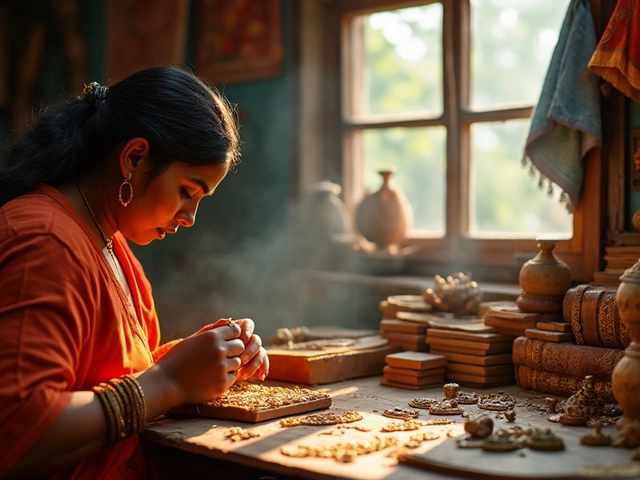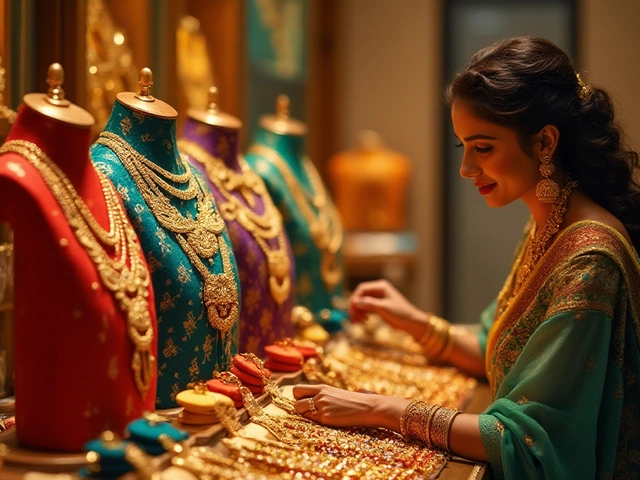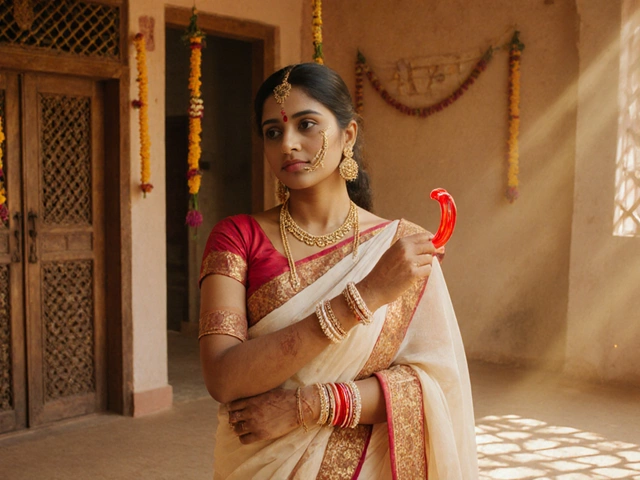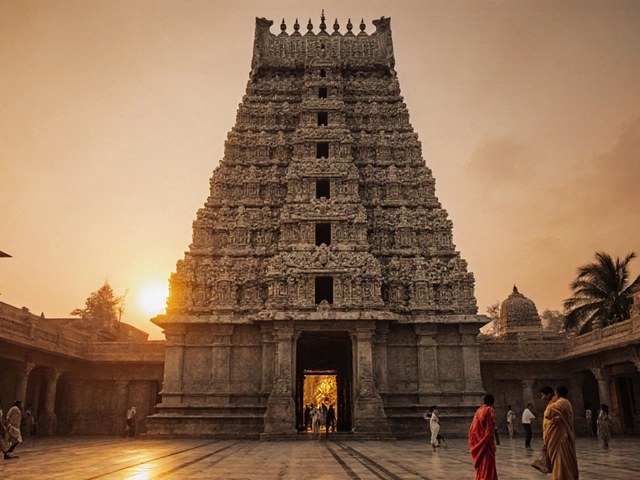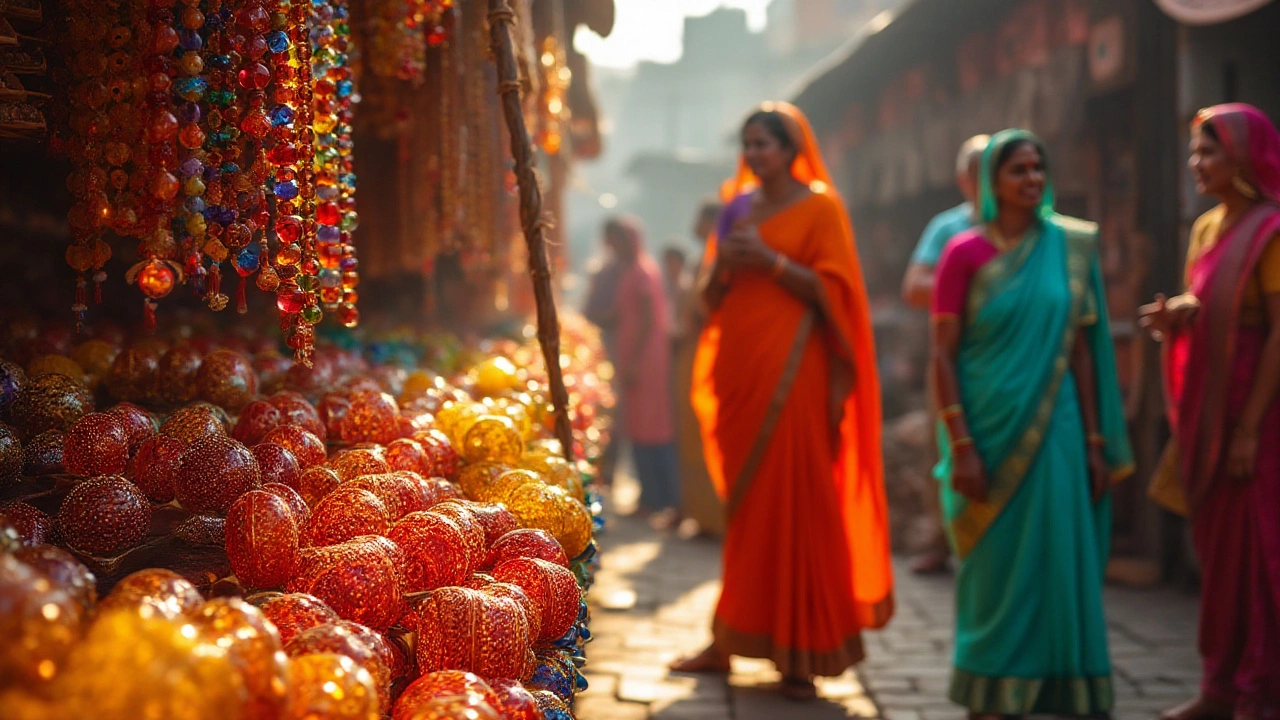
Breaking glass is a fascinating topic in the cultural and religious fabric of Hinduism, bursting with symbolism and varied interpretations. It is often wrapped in layers of beliefs that might seem perplexing at first glance. Does breaking glass carry an ill omen, or could it symbolize a turning point, a rupture from the past that welcomes new beginnings?
To unravel these mysteries, it's important to explore the broader societal and cultural dimensions of this notion. Additionally, we find an equally intriguing narrative in the tradition of wearing bangles, particularly for women in India. These vibrant ornaments are much more than decorative accessories; they embody deep-rooted cultural values and stand as markers of identity, status, and spirituality.
Join us in this enlightening journey to understand the role of glass and bangles in Hindu rituals and the evolving perception of these age-old customs in contemporary times.
- The cultural significance of glass in Hinduism
- Myths and superstitions surrounding broken glass
- The meaningful role of bangles in Indian traditions
- Symbolism and rituals associated with bangles
- Balancing tradition with modern interpretations
The Cultural Significance of Glass in Hinduism
In Hinduism, glass is often imbued with both mystic allure and practical application, augmenting its cultural significance. By understanding its place within the faith, one can glean insight into how seemingly ordinary items are elevated to a status of spiritual and emotional gravity. Glass, with its translucent beauty and inherent fragility, mirrors the Hindu perspective on life's delicate balance between material existence and spiritual enlightenment. Whether symbolized in the gleaming temples or through artifacts used in rituals, glass has carved out a niche that speaks volumes about its revered place in Hindu culture.
Traditionally, glass holds a mirror to both auspicious and inauspicious narratives. Breaking glass is often perceived as a sign of misfortune, echoing in the collective consciousness as a rupture in harmony and order. However, this interpretation is far from absolute. Some communities regard the event of glass breaking as a cleansing act, liberating negative energies and paving the path for positive transformation. Such duality in meaning reflects the layered societal values where ancient customs intersect with personal beliefs and regional practices. According to an Indian proverb, "When a glass breaks, evil departs," illustrating the multifaceted views of this substance's sudden disruption.
"The breaking of glass is like the fragility of life; it is both a pause and a continuity." — R.K. Narayan
An interesting aspect is how glass bangles play an intricate role in Hindu matrimonial traditions. These adornments are not just fashion statements but are densely packed with symbolism, representing prosperity and the safe-guarding of a woman's husband. The clinking of these bangles is believed to help ward off evil, signifying vigilance and eternal watchfulness in domestic life. Women's collection of glass bangles often grows over time, amassing vibrant colors that signify stages of personal evolution and societal roles. Despite the perceived fragility of the material, these bangles are surprisingly resilient, much like the prolific strength of the women who wear them.
In a countries' region, certain festivals involve sacred rites using glass items to call upon divine energies. Priests might use glass lamps during rituals to purify the surroundings, beseeching prosperity and health for devotees. Glass is viewed as a conduit, the transparency serving as a metaphor for clarity in thought and nobility in spirit. This association reinforces the need for transparency in human interactions, aligning moral teachings with everyday actions. Historical texts reveal that in ancient temples, glass artefacts lined the inner sanctum, believed to absorb and expel harmful energies from the environment, enriching the overall experience within these hallowed spaces.
In modern times, the cultural significance of glass continues to thrive with adaptations for new living conditions and urban settings. The focus may have shifted to more contemporary designs, yet the essence remains. As urbanization expands, glass is reclaimed as a material of art and architecture, serving as a symbol of both heritage and progress. The dialogue between tradition and modernity is played out in how glass is used in community spaces, alternating between functional roles and decorative displays. This continual adaptation highlights the enduring impact of cultural elements in evolving societal structures, ensuring they remain relevant across generations.
Myths and Superstitions Surrounding Broken Glass
Throughout history, glass has occupied a curious place in cultural practices, floating between realms of purity and mystery. In many parts of India, to break glass at home may swiftly become a topic of speculation and hushed conversations among family members. This act often invokes a sense of foreboding, layered with centuries of intriguing myths and superstitions. Primarily, the sound of shattering glass is believed by some to mark the coming of misfortune, potentially linked to the ominous notion of things falling apart. It is said that breaking a glass item accidentally is a reflection of underlying tensions or unseen negative energies brewing within the household. Yet, everything isn't necessarily pessimistic; there’s a flip side to the coin, depending on perspective and belief.
In certain Hindu communities, there exists a rare but interesting belief that the breaking of glass can also symbolize the shattering of life's hurdles. It is viewed as breaking away from hurdles that have been holding back progress, suggesting that the supposed negative may actually have a positive twist. For those particularly attuned to spiritual practices, the act can be seen as a release, both symbolically and practically, clearing the path for something more harmonious to unfold. Rituals may even accompany the aftermath of broken glass to change the course of impending bad luck, such as using holy water or chanting specific mantras.
A fascinating anecdote comes from the beliefs centered around traditional Indian bangles. Widely regarded in Hindu culture, bangles hold auspicious significance, especially for married women. The breaking of bangles, however, is steeped in complex emotions, ranging from an ill omen to a pivotal moment of change. It is mixed with sorrow in certain customs if it occurs unexpectedly, often perceived as a sign that relays disruption or loss.
'In many Indian households, glass is not just a material, but a conduit linking spiritual and tangible worlds,' says Dr. Anjali Mehta, cultural historian at the University of Mumbai.She further explains that understanding these customs provides insight into broader societal and spiritual beliefs about the metaphysical properties associated with glass and crystals. Glass objects, much like mirrors, are seen as fragile barriers between visible and invisible worlds, thus leading to increased caution about breakages.
On the flip side, the spiritual pragmatists of today offer another view, encouraging a more symbolic interpretation of breaking glass. Instead of succumbing to anxiety, they suggest embracing such accidents as opportunities to reflect on life changes. It is often deemed essential to maintain the balance between respecting age-old traditions and integrating them adaptively into the contemporary routine of living.
In conclusion, while superstition is deeply embedded in the tapestry of cultural customs, it is equally open to reinterpretation. These myths and beliefs, though potent, remind us of the depth of human tradition and its persistence in shaping our world view. Approaching it with curiosity could lead to rediscoveries and perhaps foster a broader understanding of these timeless practices.
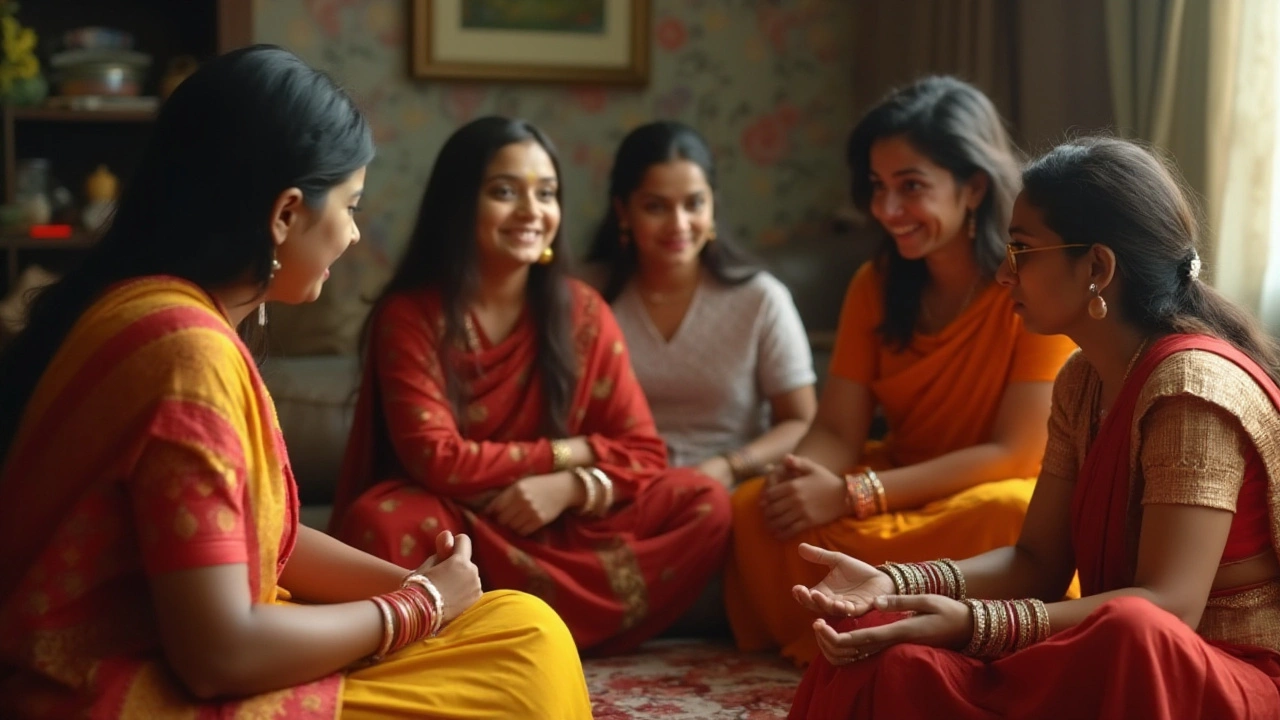
The Meaningful Role of Bangles in Indian Traditions
The colorful world of Indian bangles is an intricate blend of art, culture, and spirituality. Wrapped around the wrists of women, bangles are not mere embellishments; they narrate tales of tradition, belief, and social expectations woven through history. Each bangle holds a story, often silently echoing the sentiments and beliefs of the one who wears it. In numerous parts of India, bangles are seen as an auspicious sign for women, symbolizing prosperity, good fortune, and the undying strength of love and marriage. Typically, bangles are more than decorative. They signify the marital status of a woman, representing her role, responsibilities, and respect within the familial structure. This tradition dates back centuries, embedding itself in the social and religious threads of Indian culture, deeply intertwined with the spiritual beliefs of Hinduism.
Traditionally, the types of bangles worn can vary dramatically, often dictated by regional customs. In certain regions, bangles made of glass are preferred, while elsewhere metal, gold, and lac bangles are common. For example, in Maharashtra, newlywed women wear green glass bangles as they embody fertility and prosperity, pivotal themes in a harmonious marriage. Meanwhile, in Punjabi culture, the ceremonial 'Chooda' made of ivory and red bangles holds significant importance for brides. The sound of bangles clinking together is believed to keep positive energy flowing and ward off negativity, a belief fervently held in Hindu households. During auspicious occasions like weddings, festivals, and ceremonies, women don specific bangles that match the colors and ethos of the event. This vibrant tradition was beautifully captured by famous writer Kamala Das when she said, "Bangles are a song of my mother's land, a song that echoes the celebrations of the soul."
Bangles hold a deeper, often spiritual significance beyond their aesthetic appeal. According to Hindu beliefs, the circular shape of a bangle resembles the cycle of life, promoting the concept of eternity and completeness. The continuous circle is considered a symbol of unity, infinity, and the life cycle, resonating with the Hindu philosophy of 'Samsara.' This philosophy emphasizes the cyclical nature of life where continuity is the essence. Colors play a vital role too. Red signifies energy and prosperity, while green stands for good fortune and fertility. These meanings are integral to the life of a married Hindu woman whose bangles resonate with her life journey's aspirations. Moreover, the frequency of wearing bangles fosters good blood circulation, enhancing well-being — a fine example of tradition collaborating with practicality.
Globally, bangles are gaining recognition as cultural treasures from India, embraced for their craft and meaning. The tradition of bangles remains dynamic, adapting to modern sensibilities while clutching tightly onto its historical roots. Many designers today are combining tradition with contemporary style, creating pieces that cater not only to traditional ceremonial wearers but also to the young, fashion-forward audiences. Their ability to reflect both the past and the present makes Indian bangles an extraordinary cultural artifact. The enduring allure of bangles continues to captivate and resonate with women across generations, bridging gaps between the bygone era and the sparkling modern world.
Symbolism and Rituals Associated with Bangles
Bangles are not just ornamental; they are woven into the very fabric of cultural identity in India, illustrating the vibrant cultural tapestry that is so inherent to the region. These circular ornaments, often crafted from glass, gold, or other precious materials, signify more than mere fashion. In a traditional Hindu household, bangles are a staple accessory for a woman, often hinting at her marital status and personal prosperity. Bangles are seen as symbols of energy and youthfulness, believed to channel positive energy and drive away misfortune. The tinkling sound they produce is said to be a protective aura that shields the wearer.
Within Hinduism, there are myriad rituals that underscore the importance of bangles. During weddings, for instance, the 'chooda ceremony' remains a pivotal rite where a new bride adorns a set of red and white bangles, traditionally worn for a specific number of months up to a year. These are not just accessories but tokens of her transition into marital life, entrusted with ingraining good luck and enhancing her wellbeing. Bangles also feature prominently in pregnancy rituals, like the traditional ‘Godh Bharai’ ceremony, a joyous occasion where the expectant mother is adorned with glass bangles. As these are slipped onto her wrists, family and friends gather to shower blessings for a safe delivery and prosperous life ahead.
The colors, designs, and materials of bangles carry their own significance as well. For instance, red bangles are a mark of energy and prosperity, while green represents good fortune and fertility. Interestingly, the process of making glass bangles is an art form in itself, steeped in tradition. Places like Firozabad in Uttar Pradesh are renowned for their exquisite craftsmanship in creating these delicacies of adornment. Wearing bangles is so critical during any significant rites of passage that they have been seen as repositories of tradition, reflecting the beliefs and history of one's community.
Cultural theorist Ashis Nandy once remarked, “Bangles are not merely objects; they are a kaleidoscope of historical memories and contemporary identities.”
As times evolve, so too do the interpretations and uses of traditional bangles. While some young women might favor minimalism, they still often return to these traditions during festive occasions. The adaptability of bangles as cultural artifacts highlights their significance across time, offering an enduring glimpse into the heritage of Hinduism and its intertwining with everyday life. Indian bangles, thus, remain both a personal choice and an emblem of cultural continuity, manifesting in their intricate designs, vibrant colors, and resonant symbolism that bridges the past with the present in meaningful ways.
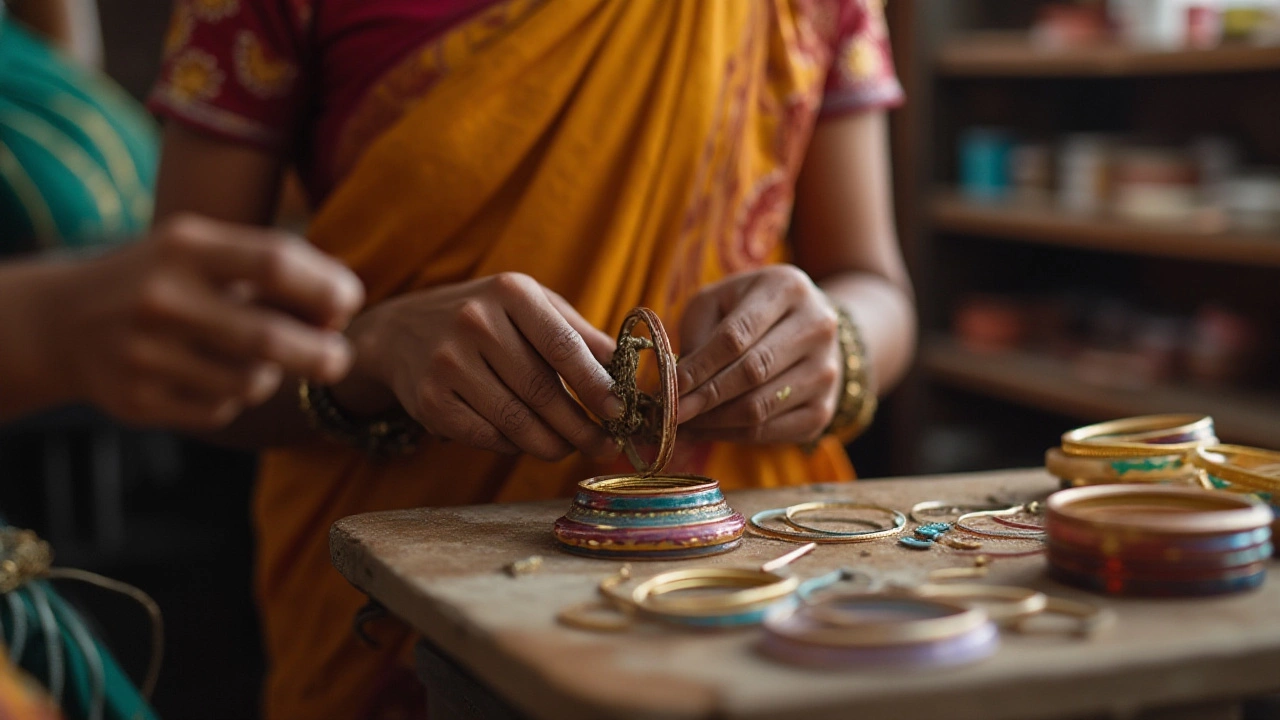
Balancing Tradition with Modern Interpretations
The interplay between cherished traditions and contemporary interpretations highlights a dynamic evolving within Hindu communities around the world. The cultural significance of both breaking glass and the use of traditional Indian bangles reflects this balance as societies modernize. This transformation is particularly visible in urban settings where younger generations are more exposed to global cultures. They often find themselves negotiating these age-old practices with their everyday realities, leading to new understandings and expressions of age-old customs.
The belief that breaking glass in Hinduism signals an ill omen, for instance, is gradually shifting as people start recognizing it as a metaphor for breaking barriers or moving past obstacles. In modern celebrations and festivities, shattered glass might be seen as an indication of breaking away from confining traditions and embracing personal growth. This evolving mindset highlights the importance of respecting traditions while also allowing for reinterpretation in modern contexts that honor personal choice and autonomy.
In the realm of fashion, Indian bangles continue to stand as a source of fascination and pride. However, today’s fashion enthusiasts experiment with materials, designs, and wearing styles that might deviate distinctly from traditional forms. From metals to wood, and even recycled materials, bangles have embraced a sustainable ethos aligning with current global environmental consciousness. This adaptability underscores how cultural symbols remain relevant by aligning with prevailing ethical and aesthetic trends. Designers are actively blending tradition with modern tastes, creating unique pieces that reflect both heritage and innovation.
"Tradition is not to preserve the ashes but to pass on the flame," says Gustav Mahler, the noted composer. This resonates deeply as communities seek to bridge the gaps between tradition and the practical realities of modern life, ensuring customs grow without losing their essence.
In many families, bangle exchanges that occur during weddings or festivals retain their symbolic essence but are often adapted to suit contemporary preferences. For instance, younger couples may opt for minimalist or unconventional pieces that represent their identities while still participating in rituals. These modern iterations of customs provide fresh perspectives on how traditions are integrated into everyday lives without feeling antiquated or compulsory. As fashion and symbolism interact, it's essential to maintain respectful intentions towards cultural heritage, crafting a relationship between history and innovation.
Such shifts are often reflected in data highlighting changing preferences and practices. According to a survey on cultural practices, 68% of respondents expressed that maintaining traditional practices is essential but should accommodate personal significance over strict adherence. Moreover, the market for hybrid designs that blend Western and Indian styles has seen a notable increase, demonstrating a growing trend toward personalization and contemporary significance.


